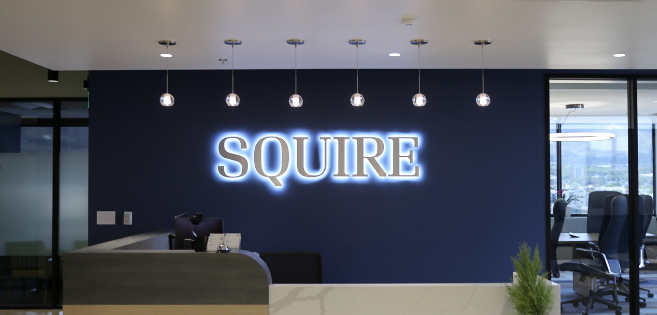Companies that sell through several channels (i.e. physical stores, web stores, online marketplaces, etc.) are finding it more and more difficult to handle the “transaction shuffle.” Do you know what I mean? Post order information here, send shipping information there, update inventory when you get time. It doesn’t take long to fall behind or to realize how many mistakes are being made. Especially when you spend more time fixing errors than you do leading your business – and when you realize that your margins on these sales channels are quite slim due to the huge labor costs you accumulate trying to manage them.
The answer to this fiasco is not one most companies want to hear: integration. But wait! Integration doesn’t have to be hard or expensive. There are several options for how to integrate QuickBooks with your eCommerce system, point-of-sale (POS) system or online marketplace. You just need to understand them and make a smart choice.
QuickBooks Integration Options
Integration is not a “one size fits all” kind of project. Of course there are a lot of technology options to help you physically move data, but today we will look at three: custom development, packaged point-to-point solutions, and multiple channel integration platforms.
Custom development – The benefit to custom development is that you can get exactly what you want, customized to your business needs. This may be important if you have a highly unique business model or product. But for most, custom development ends up costing way more than any other solution option. You are tied to the individual who created it which makes you vulnerable. And with how quickly the market is changing, updates are bound to be difficult and expensive to maintain.
Packaged point-to-point solutions – What point-to-point solutions offer is a connection between QuickBooks and one other system (i.e. Magento eCommerce, Microsoft Dynamics RMS, or Amazon.) They are typically quick and inexpensive. They are a good choice for companies that sell through a single channel and don’t plan on selling through any other. Issues arise when you change your mind and decide to, say, sell on eBay. Now, you have to buy another point-to-point solution and since it doesn’t communicate with the first point-to-point solution you bought, things are messy again.
Multiple channel integration platforms – The name sounds fancy and intimidating, and some are, but others are simple to install and use. You must do your due diligence here to know the difference. These systems are typically cloud-based so there is no software investment and you only pay a monthly subscription fee. Most services manage item uploads, orders, shipping information and inventory. Some also collect customer data, allow you to define business rules to split/route orders, and enable drop ship suppliers and third party warehouses. Along with the core services, these solutions have several connections to popular accounting or ERP packages (like QuickBooks) as well as connections to multiple sales channels like POS systems, eCommerce providers and marketplaces. They allow you to pick the connections you need to fit your business. So you may have QuickBooks for accounting, Microsoft Dynamics RMS for your POS, Shopify powering your web store, and sell on Amazon. The beauty of this model is that you can choose connectors to fit your business today, unplug ones that don’t work out, and then plug in new ones as you need them.
Aligning your Integration Solution with your Business Needs
In addition to choosing an integration solution, you will find that depending on whom you sell to, what systems you have in place, and your operational procedures, your integration approach may vary. In some scenarios, a company may need a great deal of transactional detail to feed into QuickBooks. Other times, summary data is enough. The trick is finding the right approach to help you reach your business goals.
A quick self-evaluation will help you figure out the best approach for your integration project. At the most basic level, if you only sell to consumers through physical stores and eCommerce channels, then general ledger integration is typically the right approach. If your company sells to consumers through B2C channels but also sells to B2B accounts (like wholesalers), transaction-based integration may be a better choice. Let’s take a closer look at the two.
General Ledger Integration – General ledger integration is used when a company only needs to capture relevant summary data from a sheer dollars and cents standpoint. If you typically manage item, inventory, supplier, and customer data in a POS system, a journal entry into QuickBooks is all you need to capture sales, cost of sales, sales tax collected, and cash receipts. With general ledger integration, this journal entry is made electronically by transferring the summary data from a Z Report generated by the POS system to QuickBooks. This automation serves as a great time saver since you no longer have to dedicate resources to the tedious task of hand keying the data.
Transactional Integration – In cases where a company sells to both B2B and B2C customers, QuickBooks becomes the foundation for all item, inventory, supplier, and customer and customer data. Items are created here and then published to other systems, such as POS, eCommerce, and B2B ordering systems. The designation of a system as the foundation for your data is called mastering.
Transactional integration, then, is the process of capturing sales data from multiple channels via a transaction that is created in the system where the data is mastered. Transactional integration differs from Z Report general ledger integration because actual sales transactions are created in QuickBooks. Sometimes this is done for every individual sales transaction while others create one sales transaction for each Z Report that includes every item sold for that day.
The key here is that with transactional integration, you can not only capture sales data in QuickBooks but also inventory data. This provides complete visibility into your inventory levels in a single system instead of having to compile inventory data from all of your sales channels before making purchasing decisions. Additionally, transaction level integration also enables inventory transfers between warehouses and stores, inter-store transfers, and purchase order and inventory receipt transactions to flow between multiple systems.
Summary
As you evaluate how data moves between your sales channels and QuickBooks, there is a lot to consider:
- The cost of manual data entry
- How many sales channels you have now and plan to have in the future
- To whom do you sell (B2C vs. B2B)
- What systems are involved in your sales processes
- What type of data needs to be integrated (orders, items, shipping, customer, POs to suppliers, etc.)
- How to track and monitor inventory
Gathering this data before upfront will help you find the right solution to replace your manual processes today and ensure that you approach it in a way that will support your business in the long-term.
————————-
Jeff Grundey, Co-founder and Vice President of nChannel, Service Delivery. nChannel is a complete web-based, multi-channel management platform. nChannel can connect many of the systems you use to manage sales environments and easily manage the operations associated with multi-channel selling – using the systems you already own.
Thanks for reading CPA Practice Advisor!
Subscribe Already registered? Log In
Need more information? Read the FAQs
Tags: Accounting, Software, Technology



